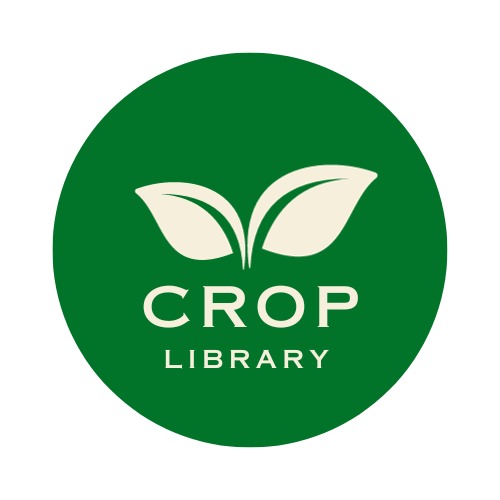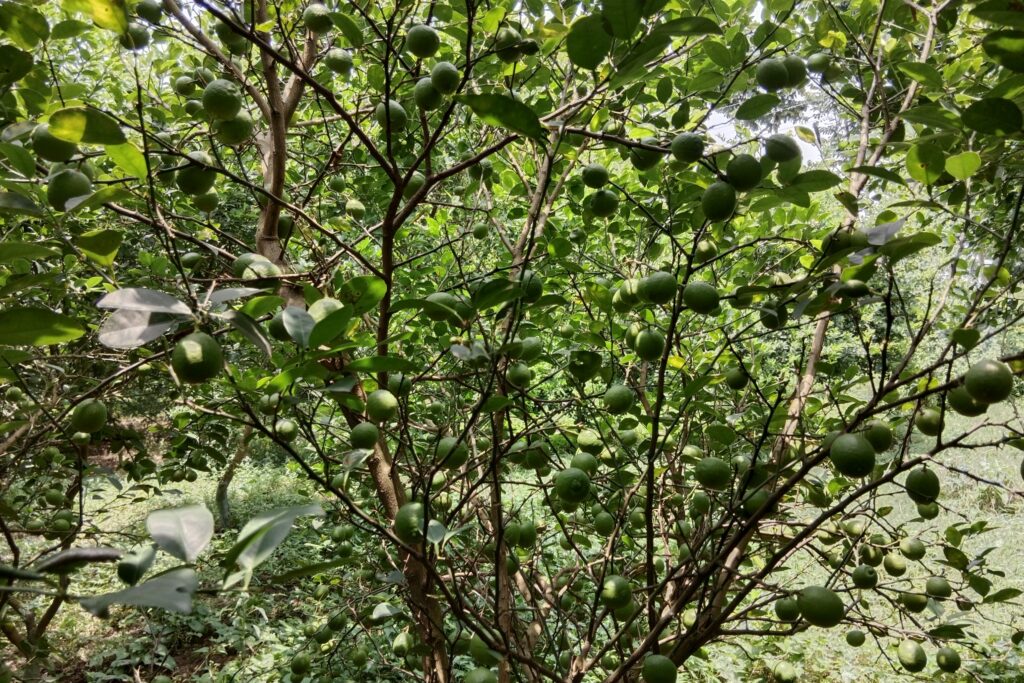Background
Mustard (Brassica juncea L.), a significant crop in the Brassicaceae family, is known by various local names such as rai, raya, laha, and raiya. To increase mustard yield, it is essential to apply the correct fertilizers at appropriate growth stages, coupled with adequate irrigation. Studies have shown that the application of sulfur significantly contributes to increased plant height, more primary and secondary branches, better dry matter accumulation, a higher number of siliquae per plant, more seeds per siliqua, greater siliqua length, and overall improved mustard yield.
This versatile crop is used for various purposes, including oil production, food seasoning, and medicinal applications. Mustard crops are particularly sensitive to water stress during critical growth stages. Providing two key irrigations—one at the pre-flowering stage and another based on need during the siliquae formation stage—has been found to effectively enhance mustard yield. Proper water management combined with nutrient optimization is vital for maximizing the productivity of mustard crops.

The tender green leaves of mustard are famous as a popular vegetable dish in Nepal as well as in northern India. Mustard seeds, which contain 37-49% oil, are primarily used for oil extraction. The oil is commonly utilized for cooking and frying. Besides culinary uses, mustard oil is also employed in the production of vegetable ghee, hair oil, and medicinal products, as well as in industries like soap making, lubricants, and tanning.
In addition to its oil, the whole mustard seed is valued as a condiment for flavoring curries, vegetables, and pickles. Due to its broad range of applications, mustard is cultivated globally as an important oilseed crop. For achieving high yields, proper cultivation practices, including the selection of the right fertilizer based on soil health and growth stages, are essential. Fertilization strategies play a critical role in optimizing growth, ensuring better productivity, and maintaining the nutritional quality of the mustard crop.
Major Fertilizers to Increase the Mustard Yield
Mustard crops have the capacity to extract significant amounts of nutrients from the soil, depending on their seed yield and biomass production. It is estimated that to produce one metric tonne of mustard seed, the crop removes approximately 64.5 kg of Nitrogen (N), 20.6 kg of Phosphorus (P₂O₅), 53.4 kg of Potassium (K₂O), 16 kg of Sulfur (S), 56.5 kg of Calcium (Ca), 9.5 kg of Magnesium (Mg), 0.068 kg of Zinc (Zn), 0.63 kg of Iron (Fe), 0.2 kg of Manganese (Mn), and 0.02 kg of Copper (Cu).
To maintain soil fertility and ensure high yields, it is crucial to replenish these nutrients with the appropriate fertilizers. Below is a list of recommended fertilizers that can be used effectively in mustard farming to support healthy crop growth and maximize yield.
Organic Fertilizer
During land preparation, it is important to apply specific amounts of compost and bio-fertilizers to enhance soil fertility and support healthy mustard growth. Commonly recommended bio-fertilizers for rapeseed-mustard include nitrogen-fixing bacteria like Azotobacter, Phosphate Solubilizing Bacteria (PSB), and mycorrhizae. These bio-fertilizers help improve nutrient availability in the soil, promoting better plant growth and increased yields.
- Apply Farmyard Manure (FYM) at a rate of 12.5 tonnes per hectare.
- Use Azospirillum (a nitrogen-fixing bacterium) at 2 kg per hectare, mixed with 25 kg FYM and 25 kg soil, and evenly spread this mixture across the main field.
- For phosphorus solubilization, apply Phosphorus Solubilizing Bacteria at 2 kg per hectare, also mixed with 25 kg FYM and 25 kg soil, and distribute uniformly in the main field.
- Similarly, apply Potash Solubilizing Bacteria at 2 kg per hectare, mixed with 25 kg FYM and 25 kg soil, and broadcast the mixture evenly in the field.
Chemical Fertilizer
NPK
For mustard hybrid cultivation, a uniform application of the recommended dose of fertilizer (RDF) is essential to achieve optimal growth and yield. The RDF for mustard hybrids is 120 kg of Nitrogen (N), 60 kg of Phosphorus (P2O5), and 40 kg of Potassium (K2O) per hectare. During land preparation, half of the nitrogen (60 kg/ha), along with the full dose of phosphorus (60 kg/ha) and potassium (40 kg/ha), is applied as a basal dose. The sources used for these nutrients are urea (46% N), diammonium phosphate (DAP; 18% N and 46% P2O5), and muriate of potash (MOP; 60% K2O), respectively.
The remaining half of the nitrogen dose (60 kg/ha) is administered as a top-dressing using urea. This application is done 35–40 days after sowing, typically at the time of the first irrigation. This split application ensures that nitrogen is available to the plants throughout the critical growth stages, promoting better nutrient uptake and maximizing crop yield.
Gypsum
Applying sulfur as gypsum (18.5% S) at appropriate rates is crucial for improving the growth and yield of mustard crops. Research shows that applying 60 kg of sulfur per hectare significantly increases oil content, by 12% in yellow mustard and 16% in regular mustard. Additionally, sulfur application at this rate has been reported to improve various growth parameters such as plant height, number of primary and secondary branches, dry matter accumulation, number of siliquae per plant, number of seeds per siliqua, siliqua length, and overall seed yield. This positive impact is attributed to sulfur’s role in enhancing metabolic activities and photosynthetic rates due to its involvement in chlorophyll formation and enzyme activation.
The higher performance of mustard crops with increased sulfur rates can also be linked to the creation of a more favorable nutritional environment in the rhizosphere and within the plant system. Sulfur accelerates the transformation of vegetative tissues into reproductive ones, stimulating floral development and leading to better yield attributes. Ensuring an adequate sulfur supply before or at the time of planting is crucial for maximizing these benefits. Sulfur fertilizers, such as ammonium sulfate (21-0-0-24S), ammonium thiosulfate, and potassium thiosulfate, are recommended for their rapid availability, whereas elemental sulfur is less recommended due to its slow conversion to sulfate-S.
Replacing diammonium phosphate with single super phosphate (SSP) at a rate of 250 kg per hectare is also effective for providing sulfur to mustard plants. Sulfur is essential for oil synthesis, being a critical component of seed protein, and it plays a vital role in enhancing both the oil content and the quality of the yield. By promoting an optimal nutritional environment and supporting key physiological processes, sulfur significantly contributes to the overall productivity of mustard cultivation.
Zinc Sulphate
To achieve higher seed yields in mustard cultivation, it is recommended to apply zinc (Zn) at a rate of 8 kg per hectare. The zinc should be applied in the form of zinc sulfate (ZnSO₄) after sowing, coinciding with the first irrigation.
Other Crop Management Practices to increase the Mustard Yield.
Sowing Time
Sowing should take place between October 10 and October 25. It is better to complete by 20 October under irrigated conditions.
Seed Rate and Spacing
Maintaining an optimal plant population is essential for a successful crop harvest. Using the recommended seed rate and spacing will help achieve the ideal plant density. Generally, a seed rate of 5 kg per hectare is optimal, and line sowing with a spacing of 45 cm by 15 cm ensures the best plant population. After preparing the field and applying pre-sowing irrigation, furrows should be opened with a 45 cm spacing between rows..
Seed Treatment
Treating seeds with metalaxyl at a rate of 6 g per kg can help reduce yield losses caused by white rust and downy mildew. To control soil-borne pathogens, it is recommended to treat seeds with Trichoderma at a rate of 6 g per kg.
Weed Management
Pendimethalin was effective when incorporated before planting. Additionally, a pre-emergence application of Pendimethalin 30 EC at a rate of 1 liter per hectare was used.
Thinning
This is a crucial intercultural practice. A seed rate of 4-5 kg/ha results in approximately 80-90 plants per square meter. For optimal growth, this plant density should be thinned to 25-30 plants per square meter for mustard and 40-50 plants per square meter for other crops.
Irrigation
Crops are highly sensitive to water stress during critical stages. To enhance seed yield, two irrigations are recommended: one at the pre-flowering stage (35-45 days after sowing) and another as needed during the siliquae formation stage. Irrigation was applied as needed. A low to moderate infestation of mustard aphids was observed and managed with an insecticide spray.
Insect-Pest and Disease Control
Apply imidacloprid @ 50 ml per acre to control aphids. For sawflies, alternate between spraying Trizophos or Quinalphos at 400 ml per acre. To manage leaf spot, use Blitox-50 at a 0.2% concentration, applied every 14 days. Use a spray volume of 150-200 liters per acre.
Harvesting
For optimal results, harvest the crop in the morning when the pods are still damp from the night’s dew. This helps minimize shattering losses.


